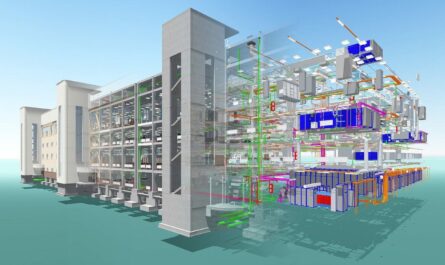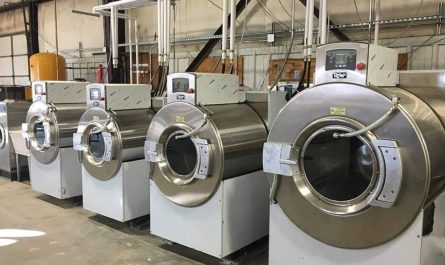Current State of Space Traffic
Earth orbit is becoming increasingly crowded as more objects are launched into space each year. With thousands of active and inactive satellites currently orbiting our planet, there is a growing need to carefully track space debris and prevent collisions. This section will explore the current state of space traffic and how orbital debris has accumulated over time.
Rise in Satellite Launches
Since the dawn of the space age in the 1950s, over 5,000 launches have placed objects into Earth orbit. In the last decade alone, annual satellite launches have doubled from around 50 to over 100 per year. As access to space continues to democratize through lower launch costs and ridesharing opportunities, the number of actors in space is expanding beyond government agencies to include commercial and international players. Global Space Situational Awareness (SSA) This rapid growth in launches has led to a proliferation of objects currently orbiting Earth.
Accumulation of Space Debris
In addition to active satellites, Earth orbit is filled with millions of pieces of space debris – inactive or nonfunctional objects left behind from spent rocket stages and satellite breakups. Some of the earliest sources of debris date back to missile and rocket tests in the late 1950s before orbital debris was even recognized as an issue. Decades of space activity have left our orbits crowded with debris from explosions, accidental collisions, purposeful satellite destruction, and other breakup events. Even small objects pose a collision threat travelling at orbital velocities of 7-8 kilometers per second. This accumulation of debris threatens future missions and access to space.
Challenges of Tracking Objects
Keeping track of the thousands of objects in increasingly dense regions of low Earth orbit and geosynchronous orbit is an immense technical challenge. Given their small size and lack of onboard tracking technologies, many pieces of space debris are too small to detect and track using existing ground-based radar and optical systems. Optical objects must be at least 10 centimeters in size while radar can typically detect objects around 10 centimeters in low Earth orbit and 1 meter in geosynchronous orbit. With millions of smaller pieces estimated to be present, the difficulty of monitoring the complete debris population is clear. Precise orbital data is also lacking for many older objects leaving uncertainties in long-term orbital predictions. These tracking limitations reduce our ability to accurately determine collision risks and successfully perform collision avoidance maneuvers when needed.
Importance of Global Cooperation
This section will discuss why global cooperation is essential to achieving effective Space Situational Awareness (SSA) on a global scale. National activities alone are not sufficient given the diversity of space actors and the boundaries of national jurisdictions in orbit.
Sharing Orbital Data
No single country or entity possesses enough resources to independently track and monitor the thousands of objects encompassing all orbital regimes. Open data sharing of observational information and cataloged object parameters between spacefaring nations and commercial entities is critical to building a comprehensive orbital database. While some limited information exchange already occurs, greater transparency and data standardization could significantly improve global SSA capabilities.
Coordination of Operations
As more actors take to space, ensuring safe and responsible use of orbital space through coordinated planning and operations will become increasingly important on an international level. Early accident avoidance notifications of potential conjunctions and maneuvers need coordinated dissemination globally to reduce collision risks regardless of which objects or nations are involved. Promoting compliance with industry best practices and guidelines through diplomatic cooperation can help establish norms of responsible behavior.
Development of International Policies
There is also a need for coordinated policy development through multilateral forums on issues like end-of-life disposal guidelines, debris mitigation standards, and liability frameworks in the event of in-orbit breakups or collisions. While voluntary national guidelines currently exist, establishing international consensus on binding regulations would promote sustainability and the long-term stewardship of space. Progress will require balancing national security sensitivities with open collaboration to establish trust and confidence in global SSA capabilities.
Challenges of Global Coordination
Achieving truly comprehensive global coordination also faces inherent challenges. National security sensitivities limit some data sharing due to intelligence objectives. Commercial competitiveness concerns may hinder full transparency from private satellite operators as well. Differing diplomatic priorities and technical capabilities between nations also complicate consensus-building on agreed policies and standards. Developing countries face additional hurdles in participating meaningfully without access to independent tracking resources or experience operating in orbital regimes. Overall, balancing openness with strategic interests will be an ongoing effort for the international community.
Addressing Gaps through Public-Private Partnerships
This section discusses how public-private partnerships can help address some of the resource and capability gaps constraining effective global SSA.
Leveraging Commercial Assets
Private satellite operators have a vested self-interest in understanding the orbital environment and reducing fragmentation risks to assure long-term access and commercial viability of space. Commercial optical imaging and radar satellites already contributing to basic SSA objectives could be leveraged further through negotiated data-sharing agreements. Constellations of microsats and nanosats being deployed offer additional opportunities for independent tracking or to augment government sensor coverage.
Developing Cooperative Research
Joint industry-government technical working groups can help identify collaborative R&D areas like improving detection capabilities for small debris, sensor calibration, data analytics, and conjunction assessment modeling. Pooled resources from multiple stakeholders spread across different countries may prove more effective than disparate national programs alone in developing next-generation SSA technologies. Commercial firms are also well-positioned to support global Space Situational Awareness (SSA) through hosted payload opportunities, cost-effective launch services, and dissemination infrastructure for sharing observational data worldwide.
*Note:
1.Source: Coherent Market Insights, Public sources, Desk research
2.We have leveraged AI tools to mine information and compile it


